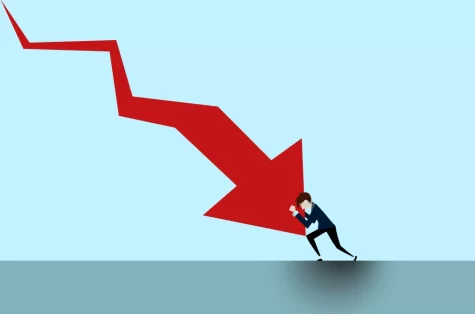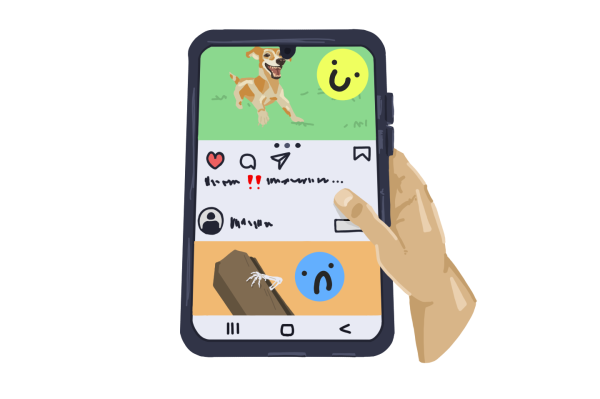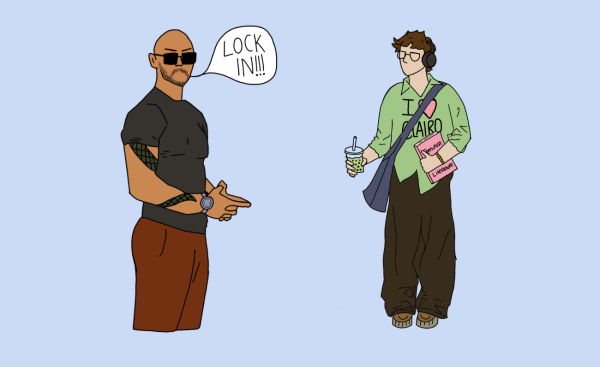Social media: What are the dangers behind it?
Alcohol, drugs, cigarettes: there are many forms of addiction. Yet, the form no one talks about is technology and its harrowing impact on the mind. According to a study done by Counter Currents, “it is estimated that the average millennial picks up the smartphone 150 times a day.” Since the launch of touchscreen cell phones in the late 2000s, the public has been hooked on these hand-held devices – and this is rapidly becoming an unhealthy attachment. As a result of this attachment, there has been a large increase in eating disorders, worsened attention spans and predators using technology to exploit adolescents’ vulnerability.
Mental illness is not foreign to the younger generation: the number of diagnoses are rising and, in turn, awareness has increased. However, what the public does not know is that social media has played a big part in this increase. Thanks to apps like Tumblr and Instagram, unrealistic body trends like a “heroin chic” physique have become popularized, which are believed to have played a large part in the eating disorder epidemic in the 21st century. In a study done in 2004 about the correlation between the media and restrictive eating disorders, researchers found “plenty of evidence demonstrating that the media glorifies slenderness and weight loss and emphasize the importance of beauty and appearances.” Researchers added that this evidence supported their conclusion that “exposure to slender media images of women and perceived pressure from the media to be thin negatively affects female body image and emotional wellbeing.” Nobody should be told or shown how their body should look just because models or actresses are feeding into body standards with every surgery and diet they do. A few generations ago, women and girls saw only a few images of the “ideal” body every week. Now, they are bombarded with hundreds of images of this one body type every time they pick up their phones.
As TikTok becomes increasingly popular, so does the amount of users with bad attention spans and a lack of ability to focus. With its entertainment-focused algorithm kept in a constant learning mode to bring in constant content based on each user’s preferences, TikTok is able to relieve boredom almost immediately. However, this comes at a price: a decreased ability to keep oneself entertained without the app, which, then, causes a dependence on the app for constant relief of boredom. In a study done by Sage Journals in 2017, it was found that susceptibility to boredom in adolescents and children is linked to an increase in access to technology, which is further fueling their digital addiction. Anyone who has been on this app knows that it can be a shot of dopamine to watch a funny clip, and since dopamine is a neurotransmitter released by the brain’s reward system, it produces feelings of pleasure – and therefore motivates the search for another hit. Research from “Current Biology” shows that when people get dopamine boosts from something, they are more likely to pay attention to similar things in the future.
Furthermore, it is common knowledge that the adolescent brain is more impressionable than an adult, which is part of the reason that predators exploit kids’ young vulnerability in a place where no one thinks to search. Research has found that 82% of child sex crimes start with communication through social media websites, and the children most targeted by online predators are aged 12 to 15. Those also happen to be the ages that are online the most. According to the American Psychology Association, “Starting around age 10, children’s brains undergo a fundamental shift that spurs them to seek social rewards, including attention and approval from their peers.” Seeking attention, children may turn to strangers on social media in hopes of stimulating that sense of approval they are craving. And since their brains are not fully developed, they are unaware of the hidden dangers that may be surrounding them as they do so.
As the world of technology advances, so does the dependency on it and the dangers it brings. As recent cases have shown, technology is not as safe or secure as it’s thought to be, and may be doing more harm than good. With all of these unresolved issues causing harm to young and vulnerable people, it is increasingly important to be aware of the effects technology has on health, safety and general well-being.













